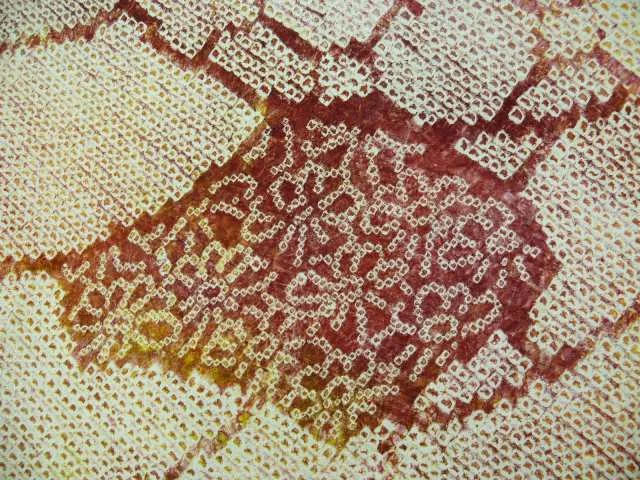Silk Kimono Fabric Bolt in Purple Shibori Floral
Silk Kimono Fabric Bolt in Purple Shibori Floral
Silk Kimono Fabric Bolt in Purple Shibori Floral
This item is a full bolt of fabric that was intended for the creation of a kimono. This is a vintage item but presents as new. The entire bolt is a thin, crisp silk with a satisfying crinkle texture. This bolt is hand dyed with a deep crepe texture and tiny precise dye spots, which is difficult to find. The fabric can be used as is, or steam ironed flat. The color is a deep rich purple dye on white silk, with an all over floral pattern. The background is a mottled purple blue with some wave motifs.
Size
35.5 cm/14 inch wide
1290 cm/508 inches long
Detailed Design and Technique Notes
Shibori is what we in the West know as tie-die but, as with so very many things, the Japanese textile artisans excel at it and their version is usually intricate, extremely precise, of great skill and very time consuming to create. In Japan it is considered a highly prized textile. Shibori garments are incredibly expensive and much revered. An elaborate, entirely shibori kimono can take a whole year to make and the cost is therefore exorbitant. There are machine done shibori fabrics nowadays but it is easy to spot, especially as the dots it creates are very regular (it is still rather expensive, though), and one sometimes sees prints done to look like shibori but they are completely flat, without the creped texture that the real thing has.
Kimono and Yukata Fabric FAQ
A 12 meter long tan will make a single kimono or yukata with no leftover fabric. The basic kimono garment design is four panels wide, each panel being around 14″ (36 cm) wide. A sleeve is a single panel folded in half, and the front and back panels reach from front hem to back hem with no seam in the shoulder to separate them.
Note that there are no actual curves on a kimono. Anything that appears curved is an illusion, basted, stitched or tucked into being. All cuts are straight. This facilitates reuse as when a single part of the garment becomes worn or stained, it may simply be relocated. Worn cuffs on sleeves may be swapped so that the worn part is now hidden under the arm and the part previously under the arm is now the cuff. This is similar to turning the collar on an old dress shirt.













